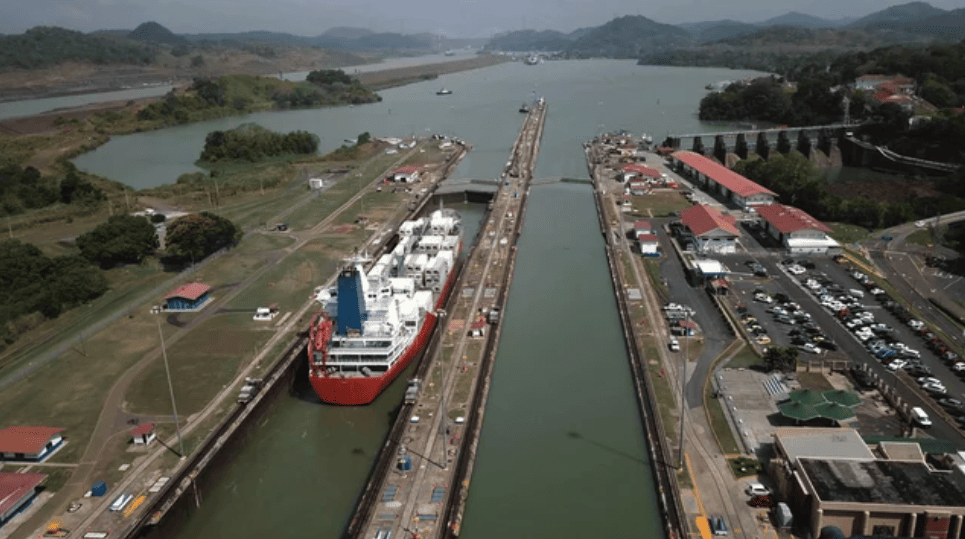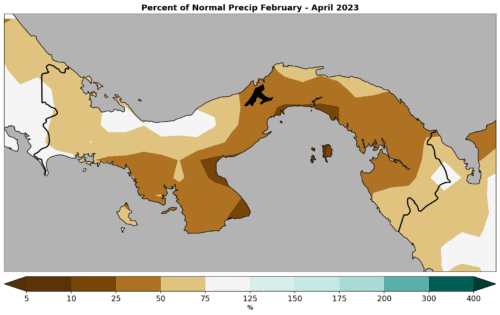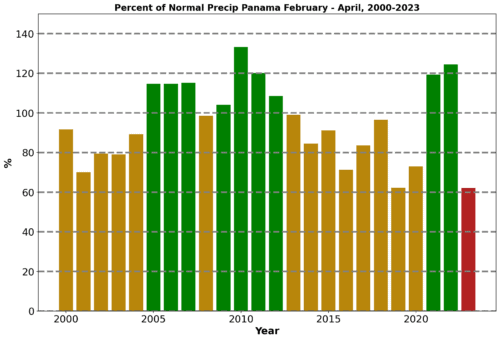Panama Canal: Drought, Shipping, and the Supply Chain

The past few months have been unusually dry across Panama and there is no sign of improvement over the next few weeks, let alone the rest of the spring season. In 2022, nearly 15,000 vessels with 520 million tons of cargo passed through the channel.
This year, there’s simply not enough water – leading to vessel restrictions and ultimately fewer goods able to travel through this area that normally moves about 6% of global maritime trade. Everstream Analytics’ Chief Meteorologist Jon Davis reveals how low rain levels at the Panama Canal are set to impact supply chains.
The importance of the Panama Canal:
- Approximately 6% of global maritime trade travels through the Panama Canal
- Last year, nearly 15,000 vessels with 520 million tons of cargo passed through the channel
Why rainfall, or lack thereof, is crucial:
- Fresh water from two large lakes in the interior sections of Panama (Lake Alajuela and Lake Gatun) is used to “lift” vessels across the country. The “lift” is around 26 meters above sea level and covers 12 locks from the Pacific to the Caribbean.
- For every vessel that moves through the canal, it takes approximately 200 million liters (52 million gallons) of fresh water.
The current situation:

Source: Everstream Analytics
- The past few months have been unusually dry across Panama. The map above depicts the percent of normal rainfall during the past three months – February, March and April. Rainfall has been well below normal across most of the country with some of the driest conditions near the canal. The canal is just east of Lake Gatun which is shown on the map in the middle of Panama. Rainfall in the area near the canal has been less than 50% of normal and in some cases, less than 25% of normal during this three-month period. This period is important since it is the start of the rainy season and begins to replenish lake levels in the interior sections of the country.

Source: Everstream Analytics
- The dry weather during the past three months is significant from a historic perspective. The graph above portrays rainfall during the February – April period for each year from 2000 to this year; this year is highlighted in red. The recent rainfall is tied for the lowest so far this century with 2019. In both years, rainfall when averaged out across the country was around 60% of normal. The values this year near the canal and the feeder lakes are lower and well under 50% of normal. In 2019, the drought continued through the spring and into the summer causing major impacts on shipping (restrictions in capacity). Inevitably, this caused a ripple effect through the supply chain across much of the globe.
The impacts…so far:
- The canal authority has imposed several restrictions in the past few months on vessels due to the decreasing availability of water in the key lakes (Gatun and Alajuela). As a result, the draft of the ships crossing the canal has been reduced which means less weight/fewer goods are able to be transported.
The forecast:
- There is no sign of any significant improvement in the situation either in the short term (the next few weeks) or the long term (the remainder of the spring). The pattern continues to feature below-normal rainfall across Panama in the foreseeable future. As a result, we expect the lake levels to decrease and the impact on shipping over the canal to get worse.
- Longer-term, the transition to an El Niño event (warmer than normal ocean temperatures in the equatorial Pacific) expected by summer is an item of concern since this typically correlates to drier than normal conditions across much of Central America.
